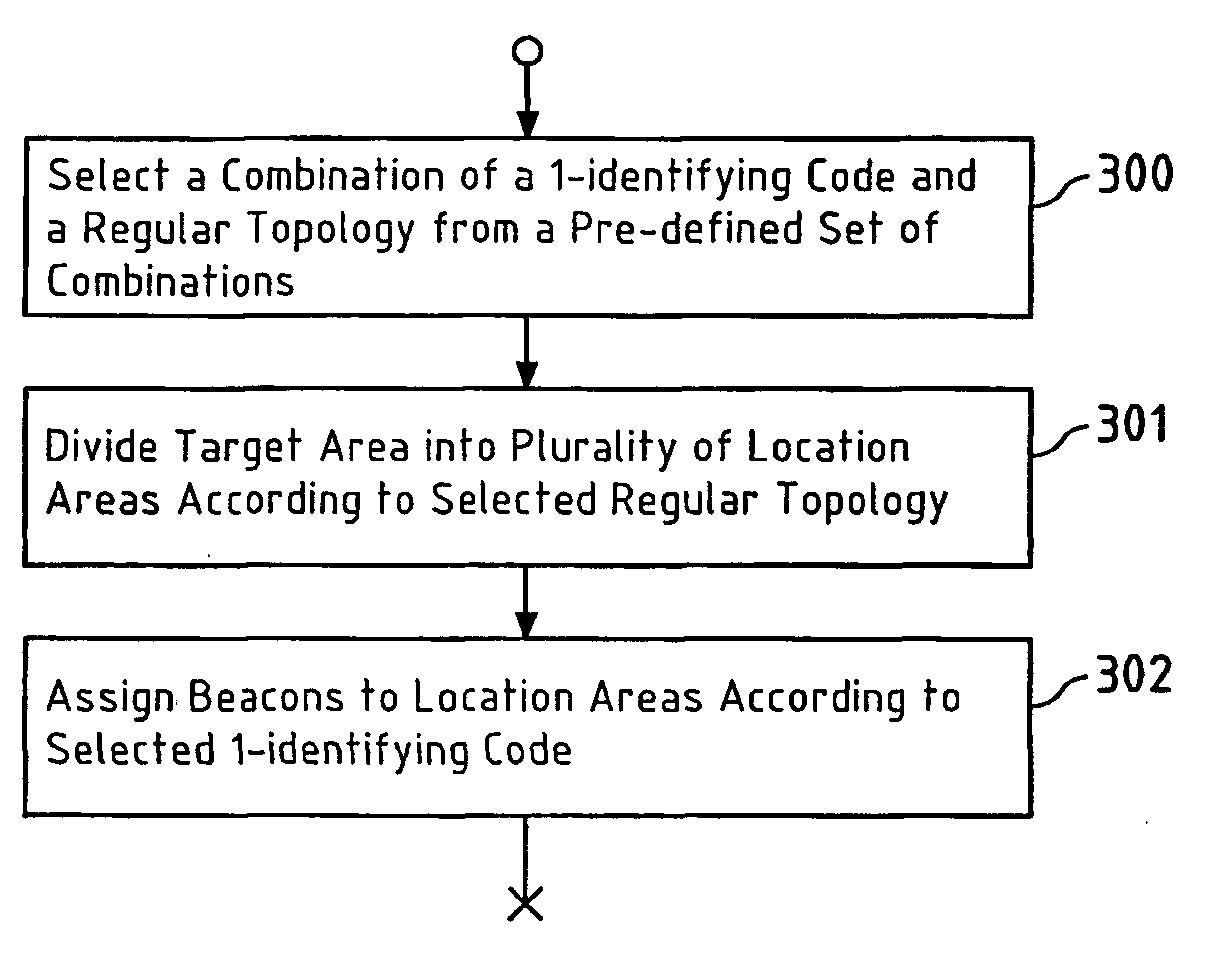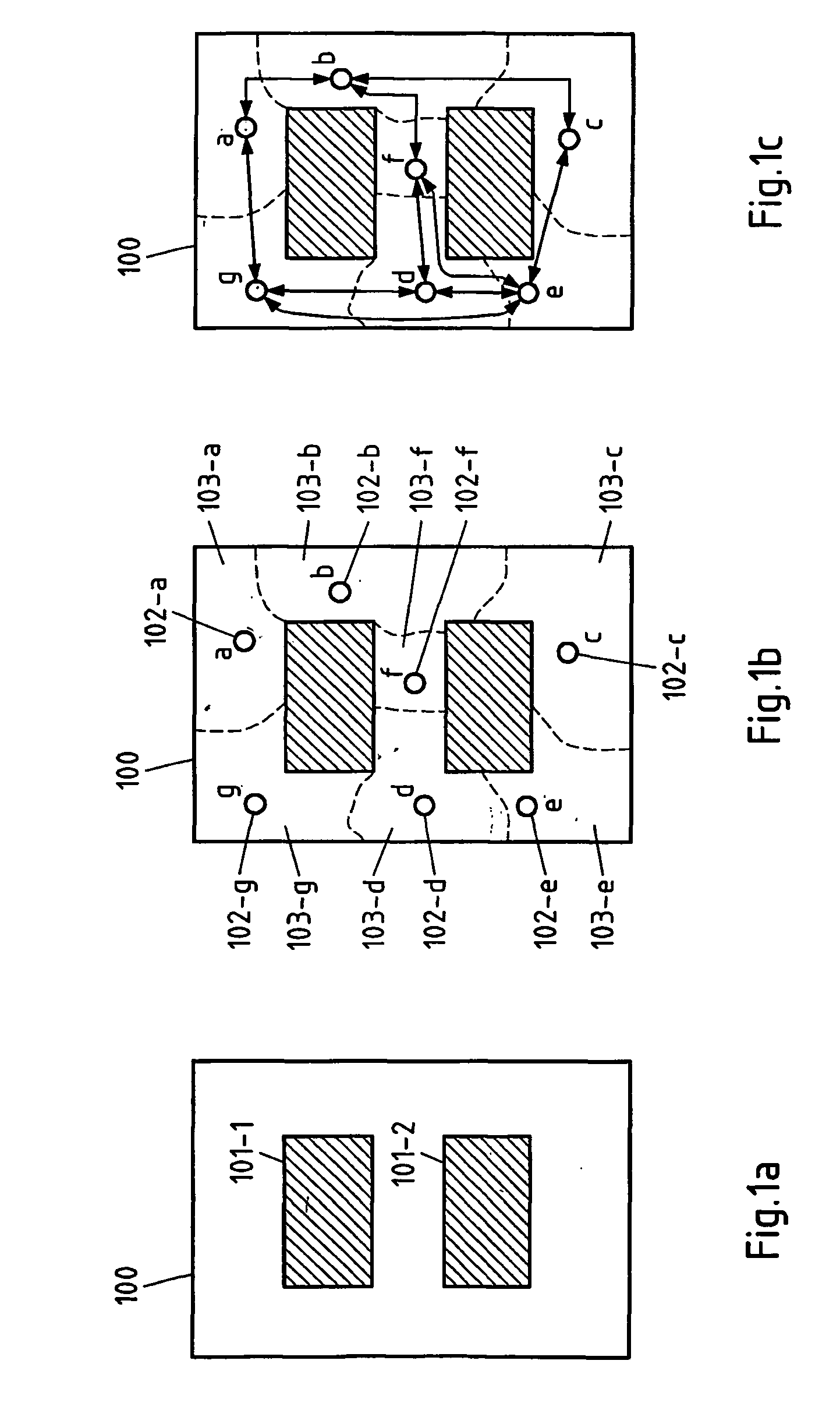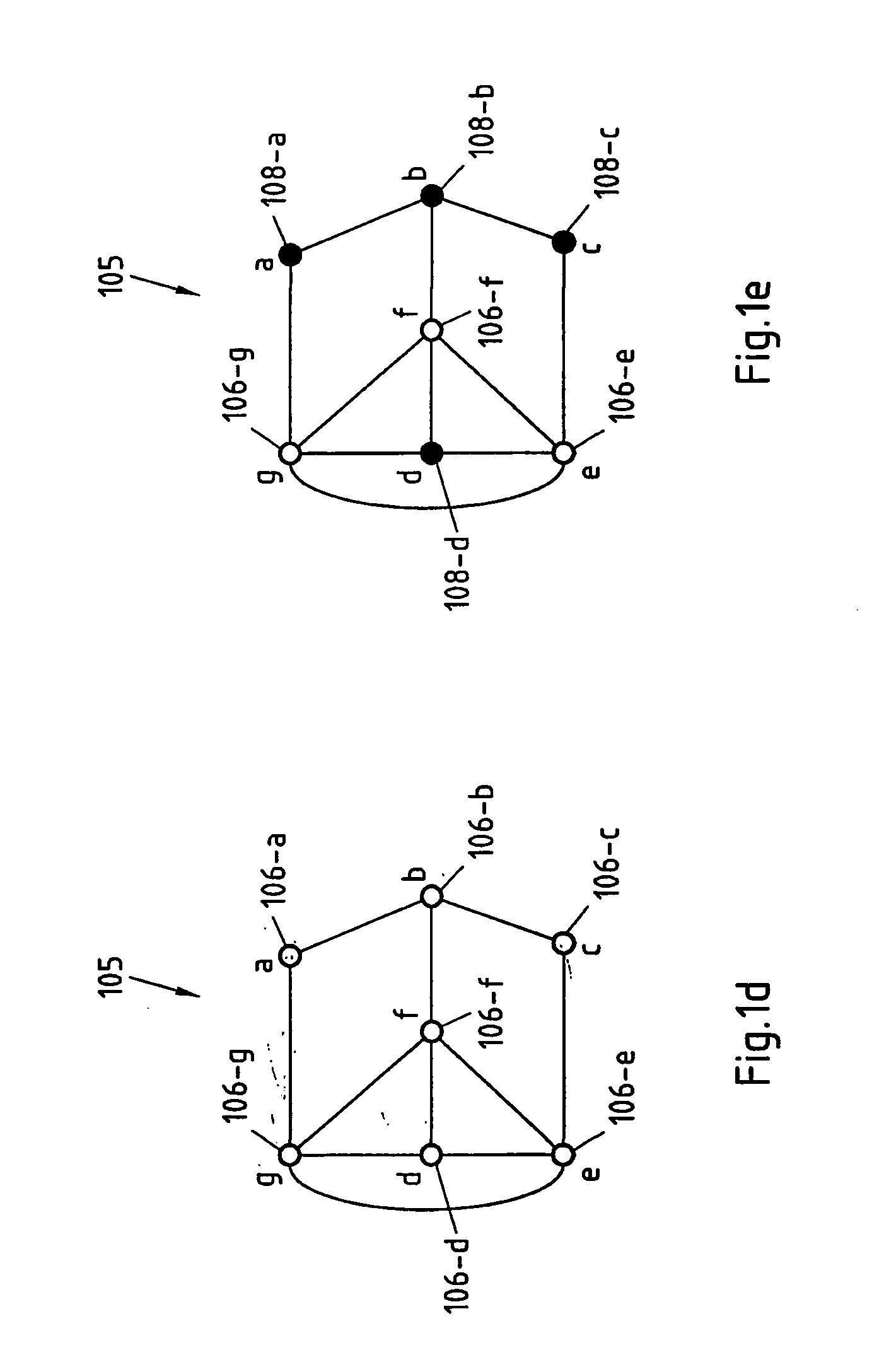Robust Location Detection Based on Identifying Codes
a location detection and code technology, applied in the direction of instruments, measurement devices, electrical appliances, etc., can solve the problems of increasing computational complexity, no standard of comparison for the minimum required number of beacons, and difficulty in deciding whether an identifying code obtained from such a search is efficient or not, so as to increase the robustness of the location detection system
- Summary
- Abstract
- Description
- Claims
- Application Information
AI Technical Summary
Benefits of technology
Problems solved by technology
Method used
Image
Examples
Embodiment Construction
[0097]In this invention, the theory of “robust identifying codes” is applied in order to robustly locate a target in a target area of a location detection system. To this end, a plurality of beacons is distributed across the target area of the location detection system. The key concept of robust location detection is to construct a solution space that allows one to identify the location area of a target by simply noting the unique subset of beacons that can detect it. Each beacon reports a “1” if it detects a specific target and a “0” if it does not. The concatenation of these 1-bit reports at a target location detection unit forms a codeword that may be used in order to uniquely identify the location area of the target (If several targets are to be located, the 1-bit reports of the beacons may be associated with according IDs of the targets to enable the target location detection unit to differentiate the targets). This solution is also designed to be robust so that it can still pr...
PUM
 Login to View More
Login to View More Abstract
Description
Claims
Application Information
 Login to View More
Login to View More - R&D
- Intellectual Property
- Life Sciences
- Materials
- Tech Scout
- Unparalleled Data Quality
- Higher Quality Content
- 60% Fewer Hallucinations
Browse by: Latest US Patents, China's latest patents, Technical Efficacy Thesaurus, Application Domain, Technology Topic, Popular Technical Reports.
© 2025 PatSnap. All rights reserved.Legal|Privacy policy|Modern Slavery Act Transparency Statement|Sitemap|About US| Contact US: help@patsnap.com



